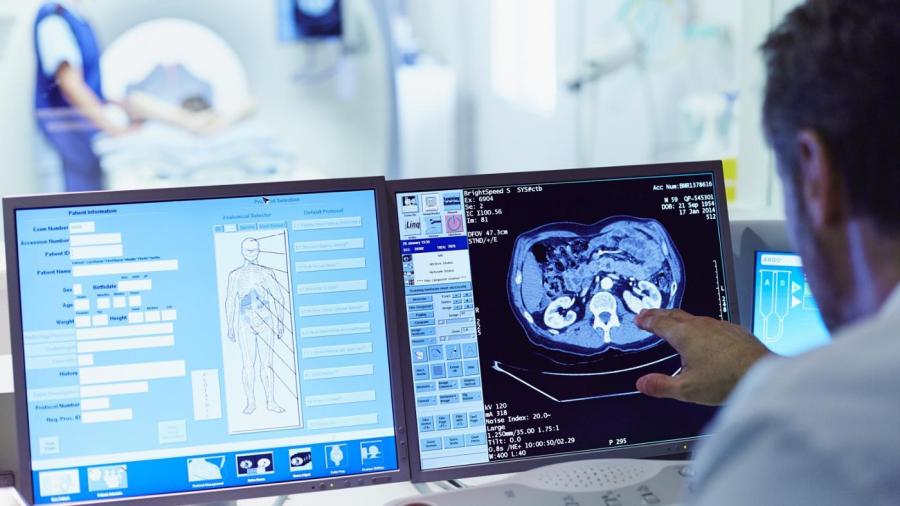What Are the Advantages and Disadvantages of CT Scans?

CT scans are highly accurate and play important roles in helping doctors make appropriate diagnoses, but they also emit radiation, which may pose health risks. CT scans produce clear, high-quality images in real time and allow physicians to make accurate diagnoses, sometimes eliminating the need for exploratory surgery and biopsies. However, the radiation they emit may be harmful, particularly to women and fetuses.
CT scans, or CAT scans, are highly accurate and useful for helping to identify and diagnose certain medical conditions. They are painless and noninvasive procedures that may help radiologists identify and diagnose cardiovascular ailments, musculoskeletal conditions, infectious illnesses, trauma and even certain kinds of cancers, according to the American Cancer Society. CT scans can record and take pictures of bones, soft tissue and blood vessels throughout the body. They may record these images simultaneously, and produce clear, high-quality images as a result. This in turn gives doctors and physicians a good understanding of what, if any, underlying medical condition a patient is afflicted with, and may alleviate the need for exploratory surgery or biopsies. CT scans also provide real-time imaging and allow cardiologists and radiologists to view 3D images of coronary arteries, nerves and veins without necessitating invasive angiographies and other cardiac procedures. However, despite these benefits, CT scans pose some risks and challenges too. They emit relatively high volumes of radiation, which researchers link to higher likelihoods for patients to develop certain cancers, such as lung and breast cancer. CT scans may also pose health risks for unborn babies, as fetuses are particularly susceptible to the harmful effects of radiation, and are therefore not recommended for pregnant women.





